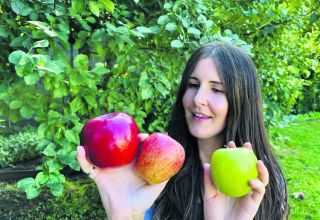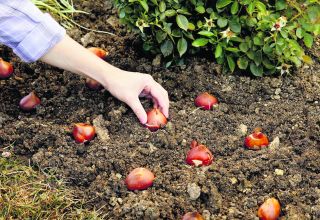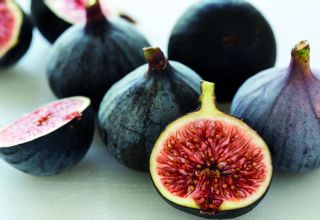Apples naturally shed some fruitlets in early summer, and this process is known as the ‘June drop’. This may look alarming but is not usually a cause for concern and is often not as bad as it looks
After watching your fruit trees flower out spectacularly in the spring and then seeing the tiny fruits beginning to form, it is devastating to see them starting to fall from the tree before they mature.
Don’t panic, this is normal for fruit trees. It even has a name- June Drop.
June fruit drop refers to the natural tendency of fruit trees to shed some of their immature fruits.
Fruit trees often set more flowers than they need for a full crop, to offset sudden loses from weather or other cultural factors. According to some statistics: “Only one bloom in 20 is needed for a good crop on a full-blossoming apple tree.”
What is June drop?
After apple trees flower, there is a period of fruit shedding. Although it appears dramatic, there is little that can be done to prevent the loss of fruit. Thankfully this is not as serious as it might appear. Although many fruits fall, sufficient usually remain attached and go on to develop into mature fruits.
Apples are large fruits and allsetting fruit can constitute a full crop (or as many as the tree can support). In contrast, the loss of smaller fruits, such as cherries, is highly significant as more of the fruits must set to constitute a full crop (or as much as the tree can support until harvest).
Young trees often suffer especially badly from June drop. Severe fruit drop is probably due to competition for carbohydrates from the shoots and roots. As the trees grow the problem becomes less severe.
Symptoms
Numerous fruitlets (ten-pence-sized fruits) are shed and fall to the ground. The peak is about eight weeks after flowering in early July, although fruit loss can often continue until mid-July. Earlier fruitlet losses are usually due to poor pollination or unfavourable weather after flowering.
June drop can be quite prolonged and it is unwise to commence thinning fruits until the fall is complete, just in case too many fruits are removed. Once the extent of natural apple losses are known, fruit thinning decisions can be made.
Is there anything you can do?
You can make sure your fruit trees get plenty of water and also that they’re not sitting in wet soil. But preventing June fruit drop is not a good thing. The tree and its fruit will grow best if the immature fruit is thinned slightly. Some fruit trees don’t naturally thin themselves enough and need some help from us. Fruits that don’t have a lot of seeds, like stone fruits (peaches, plums, nectarines), figs and persimmons usually need hand thinning. Oddly, cherry trees seem to be able to hang onto all their fruit without any problems.
If the June drop is severe every year and affects yields, the cultivation regime of the tree should be reviewed. Pruning to allow more light into the tree is one aspect that gardeners can try.
A lack of nitrogen is thought to be sometimes involved so attention should be paid to applying a general fertiliser each spring. However, be careful not to over-fertilise as excessive nitrogen can itself lead to fruit losses.
Insufficient soil moisture may contribute to fruit fall. Watering, followed by mulching, in dry spring weather may help.
The bottom line is that June fruit drop is not just normal, it’s actually good for the tree. It’s helping you too. You’ll not only get larger fruits, but the branches of your fruit trees won’t be so heavy they need propping up.
Cause
There are two main factors associated with the June drop:
- Natural loss of surplus fruits is part of the cause – trees can only carry so many fruits.
- Competition for the limited carbohydrate resources (energy) – the period before the leaves are fully expanded and contributing carbohydrates has been identified as significant. If the tree runs short of carbohydrates, fruits are more likely to be shed. This is more likely to occur in poor weather when photosynthesis (the source of carbohydrates in trees) is inhibited by cool daytime temperatures and cloudy skies. Warm nights may also cause fruit losses as increased respiration in the period of darkness will consume carbohydrates.











